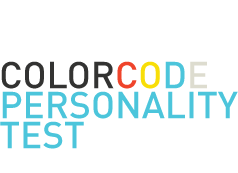VAK Test
#19
Wednesday, 26 November 2014
Wednesday, 5 November 2014
Setting My Goals
Dreams
 Since young, I have always loves animals. I was born surrounded by dogs and cats and I grew up with them. Thanks to my gold-hearted and generous mom, my love for animals blossomed.
Since young, I have always loves animals. I was born surrounded by dogs and cats and I grew up with them. Thanks to my gold-hearted and generous mom, my love for animals blossomed.I remember once when one of my cats was injured while roaming in the streets. He returned home crying in pain. After examining, his front limb was cut deeply.
Supermom on the rescue!
My mom washed the wound with slow running water, then used dilute Dettol solution to clean the wound. After that, she used a Chinese medicine powder, supposedly to heals human open wounds but my mom used it on my cat and covered the wound with bandage.
Continuously changing the bandage for two days, the wound looked less reddish and the scab had already been dried up. My cat was running and leaping and jumping around the next day, all healthy and happy!
From then onwards, I was very eager to learn several small tricks from my mom, became her assistant when we needed to heal our pets. From then I was inspired to become a veterinarian, to learn more about saving animals.
My all-time hobby is watching TV, most of the time watching cartoons (even now), but occasionally
I watch NatGeo, Animal Planet and Discovery channels to learn more about science and animals. I've always enjoyed learning new things, especially when I have gained awareness about animals.
After my A Levels in TCSJ, I'm planning to pursue my studies in overseas. I have filtered out some of the choices and have concluded the top 3 universities of my choice :
- University of Melbourne, Australia
Bachelor of Biomedicine(Duration 5 years)
Entry requirements : AAB, Chemistry, Maths and Biology/Physics - University of Queensland, Australia
Bachelor of Veterinary Science (Duration 5 years)
Entry requirements : AAB, Chemistry, Maths and Biology/Physics
IELTS overall 7; writing 6; speaking 7 - University of Nottingham, UK
Veterinary Medicine and Surgery (Duration 5 years)
Entry requirements: AAB, Chemistry, Biology and Physics
IELTS 6 with no less than 5.5 in each element
Australia is one of my most favourite countries, and I really hope I get to experience the wildlife in Australia and get to know more about it. I'm hoping to be enrolled in one of the universities in 2016.
Tuesday, 4 November 2014
Reflection to VAK
Introduction to VAK
'Learning style' should be interpreted to mean an individual mixture of styles. Everyone has a mixture of strengths and preferences. No-one has exclusively one single style or preference. Please bear this in mind when using these ideas.
Visual learning style involves the use of seen or observed things, including pictures, diagrams, demonstrations, displays, handouts, films, flip-chart, etc.
Auditory learning style involves the transfer of information through listening: to the spoken word, of self or others, of sounds and noises.
Kinesthetic learning involves physical experience - touching, feeling, holding, doing, practical hands-on experiences.
My VAK
I use Visual learning style only when there are diagrams or pictures or flowcharts, and when there are colorful words and special symbols. But often I only remember the shape/color of the diagram, and forget about the contents.
In class, the Auditory learning style is not really useful to me when the teacher is talking because I am easily distracted by movements of surrounding objects. However, I can remember song lyrics easily by listening it to once or twice only.
I believe my learning style is often towards Kinesthetic style because I have to write out my working in order to solve my questions.
RED.

There are two sections in this test: Strengths & Limitations (numbers 1-30) and Situations (numbers 31-45). Please read the instructions for both sections and make sure you understand them before beginning the test.
Subscribe to:
Comments (Atom)

